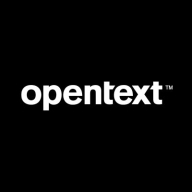

SharePoint and OpenText Content Management compete in the content management solutions category. SharePoint appears to have an advantage due to its seamless integration with Office tools, enhancing collaboration and document management.
Features: SharePoint provides robust collaboration features, seamless Office 365 integration, and efficient document management, fostering productivity. OpenText focuses on secure document management, metadata-driven information categorization, and enterprise application integration, offering a comprehensive approach to document lifecycle management.
Room for Improvement: SharePoint faces issues with customization and real-time co-authoring, often needing third-party tools for an optimized workflow. OpenText requires enhancements in performance and user interface, with its support criticized for slow response times.
Ease of Deployment and Customer Service: SharePoint offers deployment flexibility with Public Cloud, On-premises, and Hybrid options. Customer service experiences fluctuate. OpenText is typically deployed On-premises or in Private Cloud setups, limiting flexibility, with noted improvement needs in support responsiveness.
Pricing and ROI: SharePoint has competitive albeit complex pricing, notably cost-effective with Microsoft 365 integration, yielding strong ROI from improved document management. OpenText is pricier, especially with system integrations, but its extensive features justify the expense for organizations requiring comprehensive document management.
ROI may be very short if you use OpenText Content Management system effectively.
The staff lacks adequate knowledge.
Currently, they are improving support and transitioning to a new solution, which is better than what they implemented in the past three to four years.
There is a lack of detailed and timely responses, and support is not always transparent with the solutions.
The quality of Microsoft's technical support is very high.
It's also difficult sometimes to get the right information because we speak at first to a generalist and they have to go to a specialist.
There is not enough documentation about scaling, which makes it difficult to enhance or modify environments without significant effort.
Making it easy to scale from a load-balancing and infrastructure perspective.
SharePoint is massively scalable and I would rate it as 8.5 out of ten.
SharePoint allows multiple teams to work at the same time, making it adaptable for large data volumes.
The product is quite stable if it is well-managed.
The stability of SharePoint is high; it is quite stable and resilient.
Everything runs smoothly, and I have no problems with its stability.
SharePoint is a stable product.
The expectation from the customer versus the product explanation needs alignment.
Another important aspect is the improvement of the artificial intelligence already embedded in OpenText Content Management solution.
Microsoft forces users to upgrade their license to access proper auditing information, which is essential and should be included in any license.
The rights management aspect can be particularly challenging, which may affect the overall user-friendliness of the product.
Expansion of scalability is needed, specifically the threshold limits for site items should be increased beyond the current 5,000 items.
If you compare it to an archiving solution and you are using content management only for archiving, the cost of the license may seem too high, as you are paying for a license that not only includes archiving but also controls the full life cycle of information, connects with SAP and Salesforce, features a native connection with Office 365, and supports parallel editing.
The cost is a significant factor that may deter medium-sized businesses from using OpenText extended ECM.
Unlike Drupal, all necessary applications are included in the Microsoft license, making it cost-effective.
Microsoft offers bundled pricing for Office, SharePoint, and Exchange, making it cost-effective.
Enterprise licensing is generally cost-effective compared to individual purchases.
The seamless integration between SAP and OpenText offers a 360-degree view of documents, facilitating a full-text search capability.
OpenText Content Management has a feature that is unique in the market, which is the deep integration with leading applications, allowing reflection of the connections between different processes and objects in applications such as SAP, SuccessFactors, or Salesforce, visible inside the document management application.
Additionally, SharePoint acts as a version control system, allowing easy recovery of past document versions.
Its rights management capabilities and ability to restrict access to certain people are also very useful.
The most valuable feature of SharePoint is the ability to collaborate on documents without having multiple versions.
| Product | Market Share (%) |
|---|---|
| SharePoint | 11.8% |
| OpenText Content Management | 8.4% |
| Other | 79.8% |


| Company Size | Count |
|---|---|
| Small Business | 13 |
| Midsize Enterprise | 4 |
| Large Enterprise | 11 |
| Company Size | Count |
|---|---|
| Small Business | 80 |
| Midsize Enterprise | 38 |
| Large Enterprise | 81 |
OpenText Content Management offers seamless document storage and advanced search features. Ideal for organizations needing integration with SAP and other applications, it enhances workflows while ensuring security and compliance across multiple platforms.
OpenText Content Management stands out with its advanced integration capabilities, allowing seamless connectivity with SAP and other applications. Its enhanced security and permission systems safeguard information, vital for industries like banking, utilities, and oil & gas. Metadata categorization and customizable workflows aid in managing complex document lifecycles. Although improvements in visibility and integration with external tools are needed, the platform provides powerful collaboration tools, enhancing productivity. Users leverage document retention and WebReports features to ensure compliance. Challenges with support, performance during peak times, and architecture complexity are noted. Automation features and analytics require enhancement, alongside more user-friendly SmartUI and record management functionalities.
What key features define OpenText Content Management?OpenText Content Management is widely utilized in sectors such as banking, utilities, and oil & gas. It is implemented to manage software development projects, engineering documents, and workflow automation. Organizations leverage OpenText Extended ECM for document lifecycle management, post-project archiving, and records retention. Integration with platforms like ServiceNow allows efficient handling of document management across global operations, supporting information governance, tax return compilation, and capital projects.
SharePoint is a Microsoft-based platform for building web applications. It covers a widerange of capabilities and while it is appropriate for experienced webdevelopers, even non-technical minded users can easily navigate through thesystem and execute functions such as collaborating data, managing documents andfiles, creating websites, managing social networking solutions, and automatingworkflow.
Major areas that SharePoint deals with are websites,communities, content, search, insights, and composites. The purpose is to give usersthe ability to create or develop these key business components on their owneven without technical knowledge of, for example, how to build a website or howto integrate coding. Configuring SharePoint into a business's system is meantto cut out all of the complicated steps, and pave the way for easierimplementation all around.
We monitor all Enterprise Content Management reviews to prevent fraudulent reviews and keep review quality high. We do not post reviews by company employees or direct competitors. We validate each review for authenticity via cross-reference with LinkedIn, and personal follow-up with the reviewer when necessary.